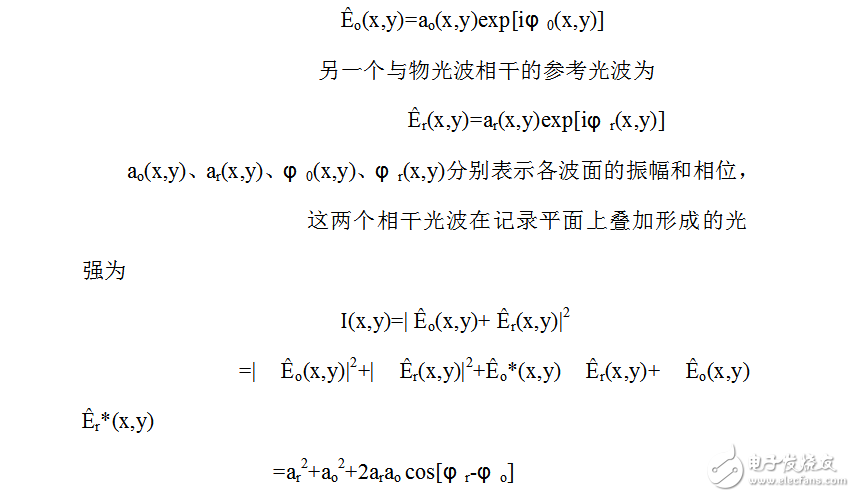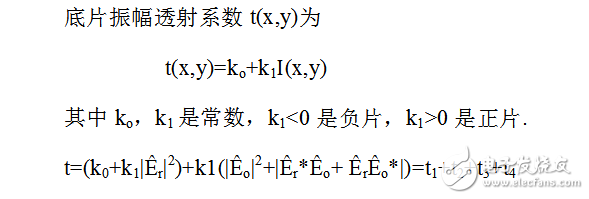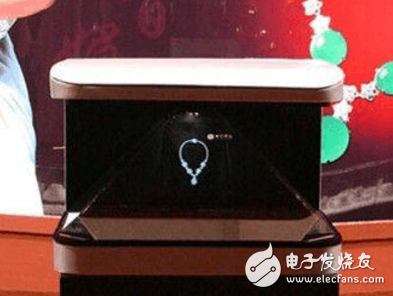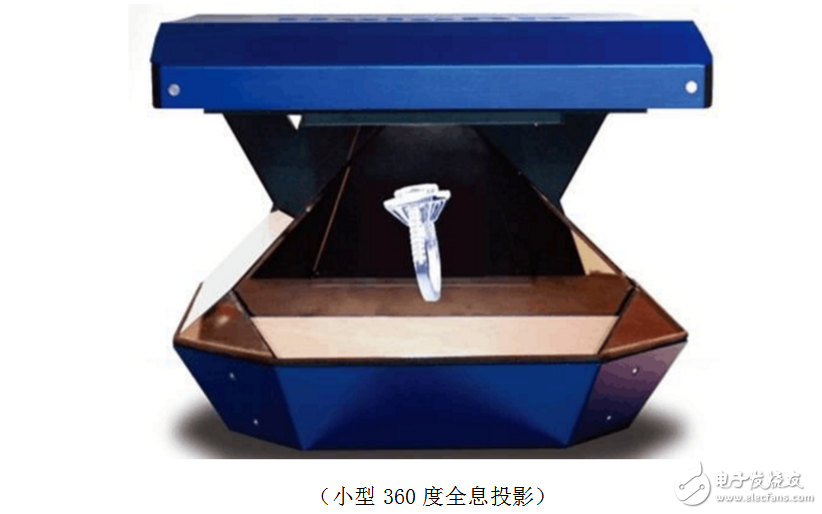In today's rapid development of science and technology, people have higher and higher requirements for vision. Therefore, the application of holographic projection technology that can realize stereoscopic stereoscopic 3D display is more and more, and it brings new and interesting visual experience to people. Provide new marketing and marketing methods for many businesses and open new doors to the market.
Holographic projection technology In the exhibition display mode, the holographic imaging cabinet using holographic projection technology can make the stereoscopic image directly suspended in the free space outside the device without any screen or medium, and the three-dimensional image is displayed from any angle. The product range includes holographic display cabinet, 180 degree holographic display cabinet, 270 degree holographic display cabinet, 360 degree holographic display cabinet, holographic pyramid, large and medium sized holographic pyramid customization, holographic projection equipment, 3D projection imaging equipment, holographic glass cabinet, etc. It can be customized according to the user's needs. The future development potential of holographic projection technology market will be incalculable.
First, what is holographic projectionHolographic projection technology is a high-tech technology popular in recent years. It is a kind of promotion method that uses a foreign imported holographic film to cooperate with projection and then display the content of the image. It provides a magical holographic image that can be imaged on glass or acrylic materials. This new interactive display technology combines decoration and practicality, is completely transparent when there is no image, and gives users a new interactive experience, becoming one of the most fashionable product display and marketing methods. Holographic projection equipment includes: holographic projector, holographic projection screen, holographic projection film, holographic projection content production and the like. Aerospace Science and Technology Digital Display Division provides 3D holographic projection imaging system project planning, 3D holographic projection imaging display content production,
Second, the principle of holographic technologyHolographic projection technology is a technique for recording and reproducing the recording and reproduction of a true three-dimensional image of an object using the principles of interference and diffraction.
The first step is to record the light wave information of the object by using the interference principle. This is the shooting process: the object forms a diffused object beam under laser irradiation; the other part of the laser is used as a reference beam to illuminate the holographic film, and the object beam is superimposed. Interference is generated to convert the phase and amplitude of each point on the object's light wave into a spatially varying intensity, thereby recording all the information of the object light wave using the contrast and spacing between the interference fringes. After the film of the interference fringe is processed by development, fixing, etc., it becomes a hologram, or hologram; the second step is to use the principle of diffraction to reproduce the light wave information of the object. This is the imaging process: the hologram is like a A complex grating, under the coherent laser illumination, a diffracted light wave of a linearly recorded sinusoidal hologram generally gives two images, the original image (also known as the initial image) and the conjugate image. The reproduced image has a strong stereoscopic effect and has a real visual effect. Each part of the hologram records the light information of each point on the object, so in principle, each part of it can reproduce the entire image of the original, and multiple different images can be recorded on the same film by multiple exposures. And they can be displayed separately without interference.
1. Record of the wave surface of the object
The first step in holographic technology is to record the full amplitude and phase information of the light waves on the photosensitive material. Since the photosensitive material can only receive the amplitude information of the light, it is necessary to convert the phase information into a change in intensity to be recorded. Interferometry is a standard method of converting spatial phase modulation into spatial intensity modulation, so coherent optical interference fringes are used to record images.
Let the light wave scattered by the object be

The first term and the second term respectively indicate the intensity of the reference light wave and the object light wave separately reaching the hologram, the sum of them represents the average intensity of the interference fringes, and the third term contains the amplitude and phase information of the object light wave and the reference light wave. The role of the reference light wave is to convert the phase distribution of the wave front of the object into the intensity distribution of the interference fringes.

2. The reproduction of the light wave surface
The second step in holography is to use the principle of diffraction to have a hologram to reproduce light waves.

Wherein, the first term and the second term represent a transmitted hologram whose attenuated reproducing pupil is in the same direction, and the third term is a +1st-order diffracted light transmitted through the hologram, except for a constant attenuation, which is a The original light wave is exactly the same as the reproduced light wave, and the fourth is the -1 order diffracted wave passing through the hologram, which is a conjugate wave with the original light wave.
Third, holographic projection classification1, 270 degree holographic projection
The 270-degree holographic cabinet presents a full-scale stereoscopic effect by displaying the presentation content from multiple angles. Phantom imaging is a real-life imaging in which the three-dimensional picture is suspended in mid-air, which can create an atmosphere that is also illusory and true, with a strong sense of depth and presence. Using special technology, it is not subject to light image. After the special content is processed by the software, the 3D stereo 3 image can be displayed in front of the audience. It is suitable for individual items with detailed details or internal structure, such as watches. Famous cars, jewellery, industrial products, and characters, cartoons, etc., give the audience a feeling that they are completely in the air.

2, 360 degree holographic phantom imaging system

360 holography is also called 360-degree holography and 360-degree holographic imaging, which we call 360-degree holographic imaging here. The 360-degree holographic phantom imaging system uses a mid-air imaging system that suspends three-dimensional images in the real scene of the cabinet. The 360 ​​holographic phantom imaging system consists of a cabinet, a beam splitter, a spotlight, and a video playback device. Based on the principle of spectroscopic imaging, a special process of constructing a three-dimensional model is performed on the real shot of the product, and then the product image or product 3D model image is taken. Superimposed into the scene, it constitutes a product and display system combining dynamic and static. You don't need people to wear any polarized glasses, you can enjoy 3D phantom stereo display effects without any restraint, giving people a visual impact and a strong sense of depth.
3, air fog screen stereo imaging description:
Air fog screen projection imaging is a brand new air imaging device. The device uses the imaging principle of the mirage to present the light and shadow image by means of particles present in the air. Using a thin layer of water mist wall instead of the traditional projection screen allows you to shuttle freely through the screen image to achieve the illusory effect that a human can enter the video. The use of an atomizing device to generate a large amount of artificial fog, combined with the principle of air flow, can produce a screen to form a plane fog, and then project the projection device on the screen, thereby forming an imaginary stereoscopic image in the space, forming a kind of Three-dimensional stereoscopic images give people a new kind of stereoscopic visual enjoyment. Their images give people the feeling of being like a pedestrian painting. They are painted in people, and they are also true and illusory, such as being in a fairyland in Yaochi. Flickering, mysterious and seductive features develop some amazing display projects. On the misty fog screen, a mythical story like a magical reality is shown. It will bring an unprecedented audiovisual experience to the audience.

1. Holographic anti-counterfeiting technology
Holographic anti-counterfeiting technology is a new anti-counterfeiting technology developed by applying laser holography technology. It is also called laser anti-counterfeiting. This technology has played an important role in anti-counterfeiting in the early days, but with the passage of time, laser holographic image-making technology has spread rapidly. Nowadays, all the counterfeiters have been attacked and almost completely lost their ability to resist. The improved laser holographic image anti-counterfeiting technology and the proliferation of the first generation of laser holographic anti-counterfeiting technology have prompted people to start to seek to improve the existing technology. There are three main improvements: one is the application of computer image processing technology to improve holographic images; the second is transparent laser holographic image anti-counterfeiting technology; the third is reflective laser holographic image anti-counterfeiting technology.
(1) Applying computer image processing technology to improve holographic images
Computer image processing technology improved laser holographic image has experienced two developments. The first form is computer synthetic holography. This technology is to optically image a series of ordinary two-dimensional images, and then process them according to the imaging principle of holographic images. A holographic recording material forms a computer pixel holographic image. When observing such a pixel holographic image, different three-dimensional images can be seen at different viewing angles, and the graphics and colors have an extremely flexible and dynamic effect, and are not limited by the direction of the reproduced light. The second form is a computer-controlled direct exposure technique. Unlike ordinary holographic imaging, this technique does not require a subject to be photographed. The required graphics are completely generated by a computer. The two coherent beams are controlled by a computer to generate all the patterns point by point in units of pixels. Different points can change the angle between the two beams to create a three-dimensional hologram with special effects.
(2) Transparent laser holographic image anti-counterfeiting technology
Ordinary laser holographic images are generally molded with an aluminized polyester film (which can also be first molded and then aluminized with a polyester film). The effect of aluminizing is to increase the intensity of the reflected light to make the reproduced image brighter. Both the illumination light and the viewing direction are on the observer side, and such a laser rainbow embossed hologram is opaque. The transparent laser holographic image actually eliminates the aluminized layer and directly molds the holographic image onto the transparent polyester film. In 1996, the Ministry of Public Security of China applied the transparent laser holographic image to the resident ID card, and covered the ID card with a transparent film. When observing the front of the ID card under the light, not only can the contents of the certificate be seen, but also the transparent film can be seen. Two-dimensional, three-dimensional rainbow holographic images ("Chinese and English" in the "Great Wall" and "China").
(3) Anti-counterfeiting technology of reflected laser holographic image
The principle of reflective laser holographic image imaging is to project incident laser light onto a transparent holographic latex medium, some of which is used as reference light, and another part illuminates the object through the medium, and then the object is scattered back to the medium as object light, and the object light and the reference light are mutually Interference, a multi-layer interference fringe surface is generated inside the medium, and the dielectric film is processed to generate a plurality of semi-transparent reflecting surfaces inside the medium (for example, there may be more than 20 reflecting surfaces in a 6-micron thick latex layer), and irradiated with a white light source. The hologram, the multi-layer semi-transparent reflecting surface generated inside the medium reflects the light back, and can see the virtual image of the original against the reflected light, so it is called a reflected laser hologram.
2. The application of holographic technology in medicineThe application of holographic projection technology in medicine has changed the way of medical diagnosis and treatment, thus alleviating the pain of patients in diagnosis and treatment. Holographic projection technology can be used to measure blood pressure, according to X-ray, and can directly see the patient's body with glasses. The condition of the lesion helps the doctor analyze and treat. Of course, holographic projection can display 4D holographic projection technology through image processing and stereoscopic production, and the human body information is fully presented, and the authenticity is higher. At the same time, the image can be saved, and the multiple playback is convenient for the doctor to observe carefully, and for some smaller The parts that are difficult to observe can be clearly enlarged by magnification, rotation, and inversion, making it easier to observe. Holographic projection technology can also be used in dental technology. This technology is embedded in the inspection pen, and then the pen is scanned and recorded in the mouth. Then put this image on the computer to clearly observe the arrangement of the teeth, so that the appropriate braces can be used for the correction of the teeth.
3. The application of holographic technology in artInteractive multimedia holographic projection technology, stage art design, virtual application, interactive multimedia technology, innovative application and design, is gradually changing people's audio-visual feelings, changing people's appreciation attitude towards things. This makes many people accustomed to accepting and understanding things in a stereoscopic and intuitive way. The beautiful scenery, the fascinating transition, the dim light effect, give people a great visual experience.
Stereoscopic interactive experience stage art design and guidance holographic projection technology is commonly used in technical applications. Holographic projection technology can not only produce stereoscopic aerial illusions, but also enable illusions to interact with performers, complete performances together, and produce shocks. Regretful performance. In the innovative fusion and collaborative technology of interactive multimedia holographic projection technology and film and television clips, stage art and film clips have an extraordinary fusion in the same space, showing the audience the latest innovations in the world of multimedia art. The application of holographic projection technology in dance beauty enhances not only an ornamental vision, but also a self-satisfying experiential consumption. People are amazed at technology and technology in a virtual vision that is illusory in light and shadow. The magic of the means, but also attracted by the rich content.
Shenzhen Uscool Technology Co., Ltd , https://www.uscoolvape.com